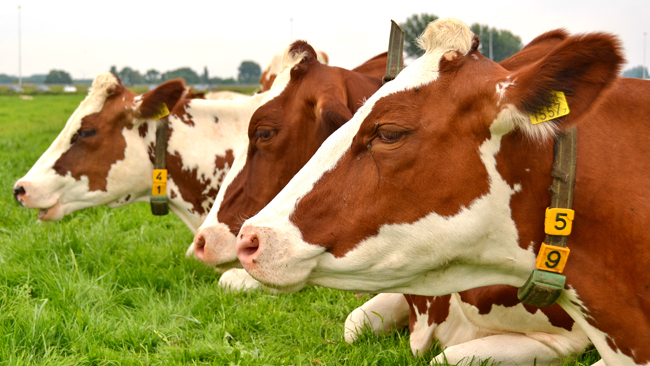Setting a high carbon price for emissions from agriculture combined with changes in dietary preferences could cut methane and nitrous oxide emissions from farming by two-thirds.
Using four different dynamic economic models, researchers at IIASA have estimated the mitigation potential of non-CO2 greenhouse gases from agriculture. They found that when the carbon price was set at the highest level, US$ 2500 per ton CO2 eq, emissions could be reduced by 3.9 Gt CO2 eq by 2050. This represents almost a 68 per cent reduction in these emissions compared to 2015 and an 8 per cent reduction in all current greenhouse gas emissions.
Even at the lowest carbon price tested in the model, US$ 20, there was a significant reduction of 0.8–1.4 Gt CO2 eq. If this was combined with changes in dietary preferences towards more plant-based diets, emission reductions would increase to 1.7–1.8 Gt CO2 eq.
The model included three groups of mitigation mechanisms:
- technical, including technologies such as animal feed supplements, nitrification inhibitors or anaerobic digesters;
- structural, such as shifts in management systems, crops and livestock breeds, and international trade;
- production effects, which are changes in overall production levels in regions.
In the low carbon price scenarios, technical interventions, followed by structural changes, represented the greatest share of the mitigation potential. But when the carbon price is increased, production plays a greater part, since technical and structural options become exhausted.
The sectors that are most affected are ruminant production followed by cereal production. Land areas for livestock production will decrease. This could give an extra mitigation potential not accounted for in the models, since this surplus land could be used for afforestation.
The researchers also investigated how changes in dietary preferences towards a more plant-based diet would influence the different carbon price scenarios. In the low carbon price scenario changes in dietary preferences have a greater effect on the mitigation potential, almost doubling it. In the high carbon price scenarios, production of animal products is already reduced and changes in preferences only contribute an extra five percent of mitigation potential.
“The models agree that diet change can contribute only part of the efforts needed to achieve the 1.5°C climate stabilisation target and policymakers should not forget about the production side measures, which in this study provide the large majority of the mitigation potential,” says one of the authors, Petr Havlík.
Although the researchers show that when carbon price alone is the driver behind reduced consumption of animal foods this might amplify the differences in animal consumption that already exist. This could mean that more affluent people would continue to eat as before, while reductions would mainly occur among poorer people who already eat less meat. If instead the driver is changes in preferences it is likely to have a more equalising effect on animal consumption, which would be preferable from a health perspective.
Kajsa Pira
Source: Frank S, Havlík P, Stehfest E, van Meijl H, Witzke P, Pérez-Domínguez I, van Dijk M, Doelmann JC et al. (2018) Agricultural non-CO2 emission reduction potential in the context of the 1.5°C target. Nature Climate Change DOI: 10.1038/s41558-018-0358-8

























